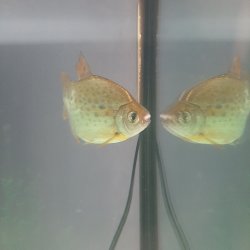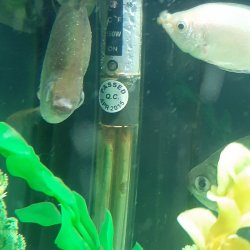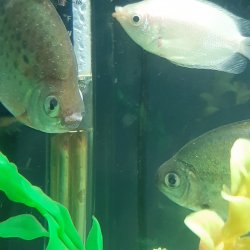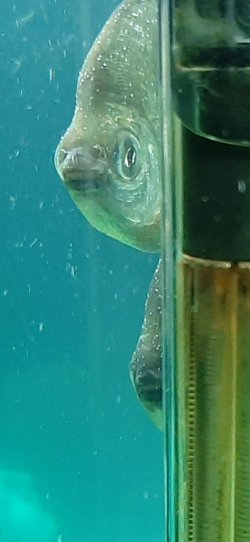Penelope .R
Fish Fanatic
Both of my silver dollars have white patches above their mouths, this may be a stupid question but I can't tell if it's fungus or their faces rubbed raw from swimming against the glass or something else.
They're both five to six years old and I've had them since they were small, the tank used to be cared for by someone else until I took over a few weeks ago. They're very skittish and spazzy but they have plenty of hiding spaces and I'm trying to expand their school so they feel safer.

The white patch on his face is what I'm worried about. Both of them have it.
I've had a slew of issues when adding new fish. A baby silver dollar died a day after I purchased him from fungus growing in his gills (I moved him in a quarantine tank but there's a significant chance it spread to others in the tank), I lost a kissing gourami to ick which spread through the tank within a day, and another kissing fish died yesterday with pop eye. All fish were sick when I purchased them but I didn't notice until they were home.
Right now, I know most of the tank has ick, I'm treating it with ParaGuard and it's definitely helping. I'm also treating with Pimafix since the two other baby silver dollars I have came from the same tank as the one that died with fungus. I guess now I know the importance of quarantining new fish, I won't make this mistake again.
They're both five to six years old and I've had them since they were small, the tank used to be cared for by someone else until I took over a few weeks ago. They're very skittish and spazzy but they have plenty of hiding spaces and I'm trying to expand their school so they feel safer.

The white patch on his face is what I'm worried about. Both of them have it.
I've had a slew of issues when adding new fish. A baby silver dollar died a day after I purchased him from fungus growing in his gills (I moved him in a quarantine tank but there's a significant chance it spread to others in the tank), I lost a kissing gourami to ick which spread through the tank within a day, and another kissing fish died yesterday with pop eye. All fish were sick when I purchased them but I didn't notice until they were home.
Right now, I know most of the tank has ick, I'm treating it with ParaGuard and it's definitely helping. I'm also treating with Pimafix since the two other baby silver dollars I have came from the same tank as the one that died with fungus. I guess now I know the importance of quarantining new fish, I won't make this mistake again.






